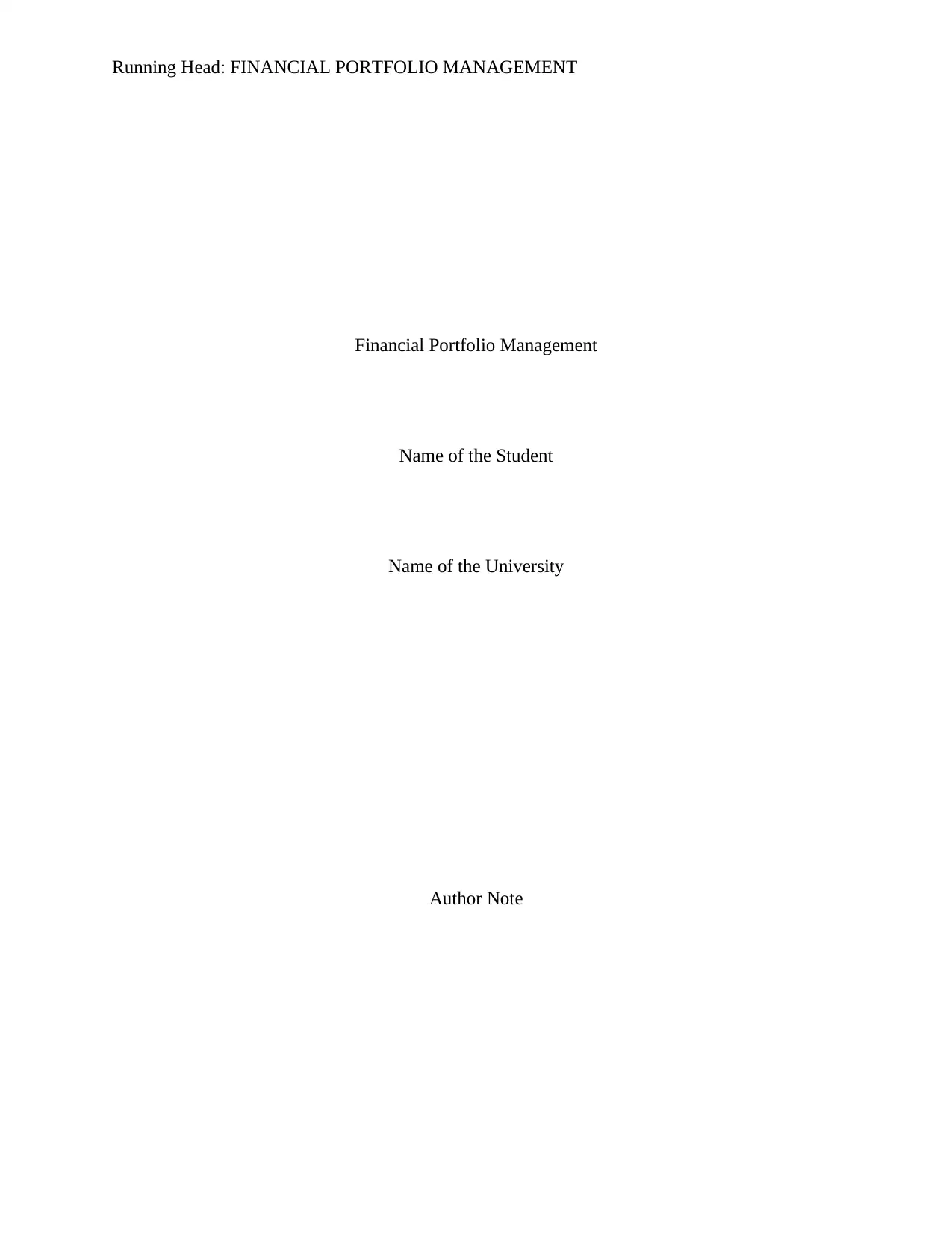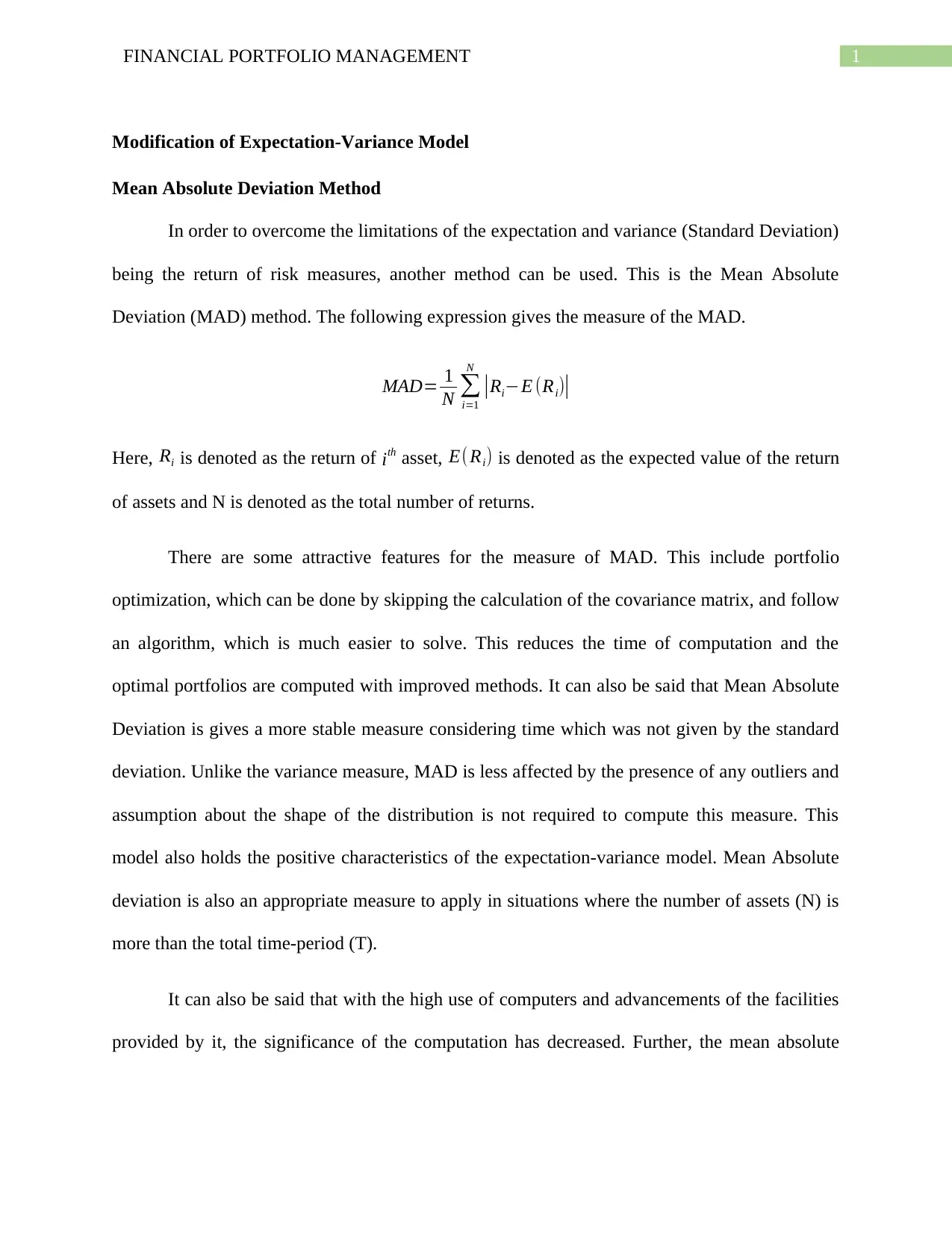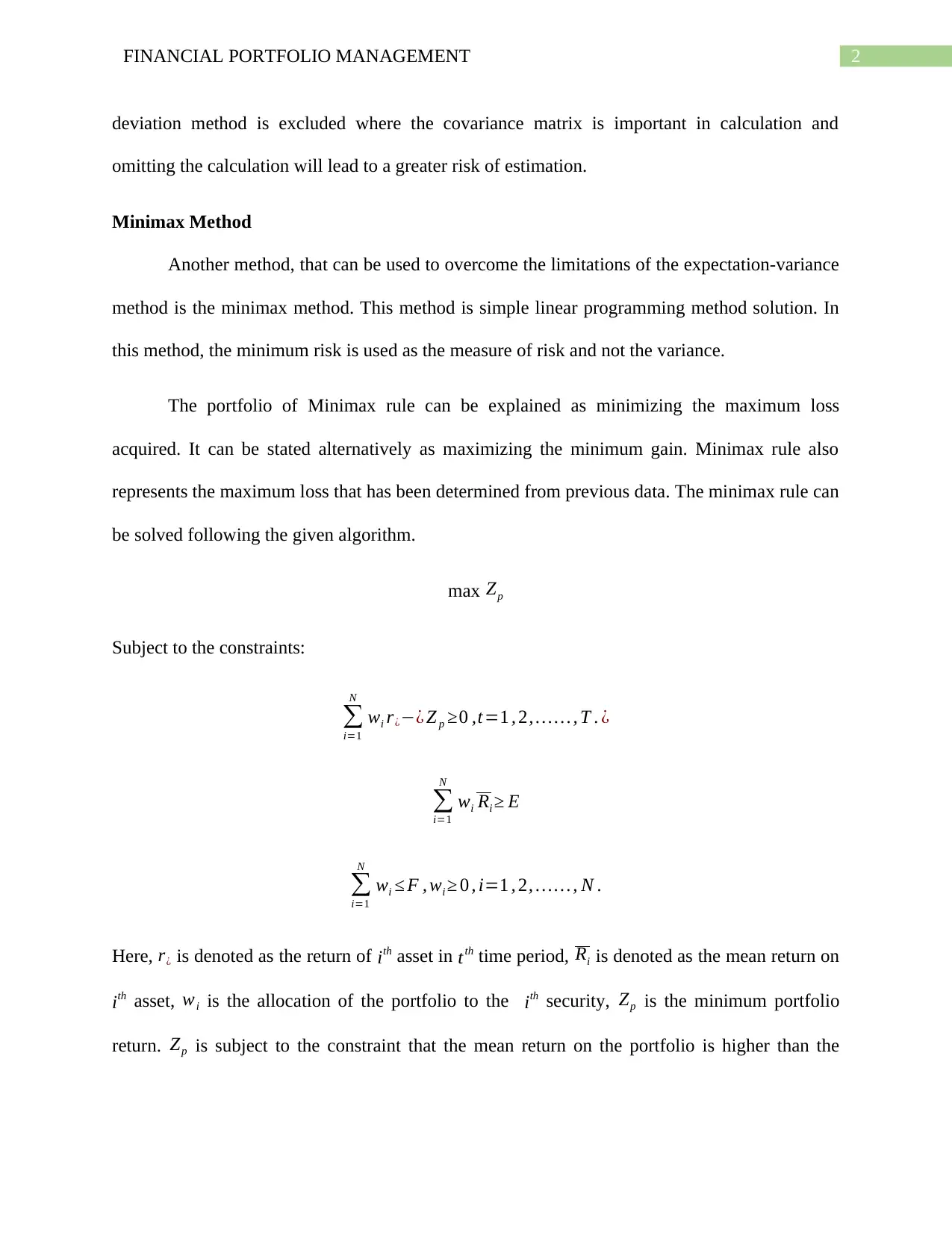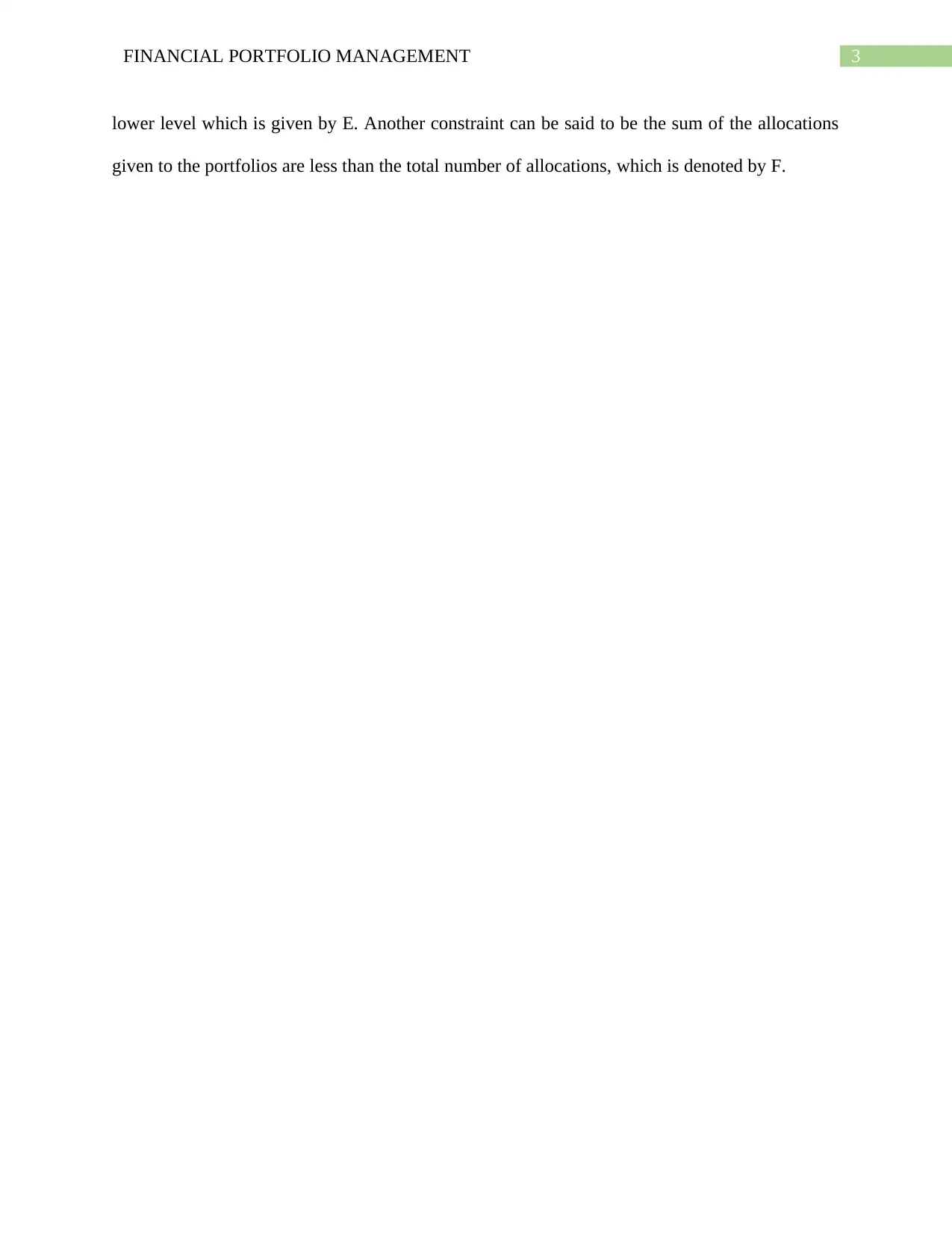Financial Portfolio Management: Comparing Methods and Analysis
VerifiedAdded on 2019/11/12
|4
|531
|198
Report
AI Summary
This report delves into the realm of financial portfolio management, exploring two key methodologies: Mean Absolute Deviation (MAD) and the Minimax method. The MAD method, presented as an alternative to the expectation-variance model, is highlighted for its ability to simplify portfolio optimization by circumventing the need for a covariance matrix, thereby reducing computational complexity. It is also noted for its relative stability over time and reduced sensitivity to outliers compared to standard deviation, making it suitable for scenarios with more assets than time periods. The Minimax method, another approach discussed, focuses on minimizing maximum loss or maximizing minimum gain. This method utilizes linear programming to determine the minimum risk associated with a portfolio and is explained through a specific algorithm with constraints. Both methods are analyzed in terms of their applications, strengths, and limitations within the broader context of financial portfolio management. The report aims to provide a comprehensive overview of these techniques for effective portfolio management and risk assessment.
1 out of 4









![[object Object]](/_next/static/media/star-bottom.7253800d.svg)